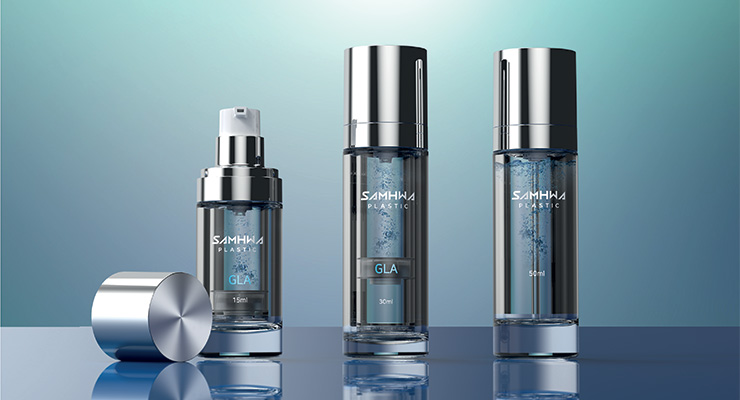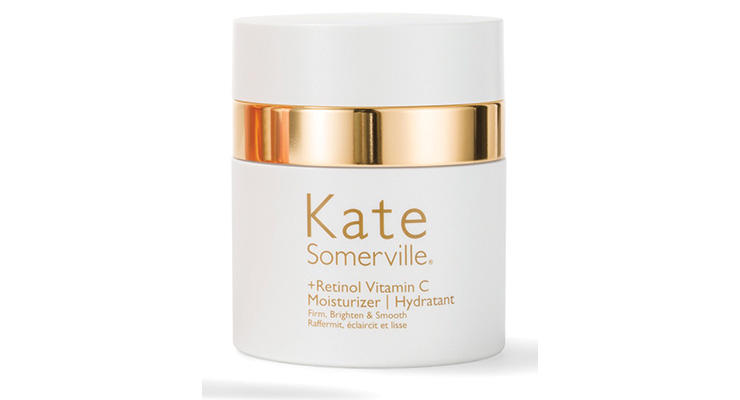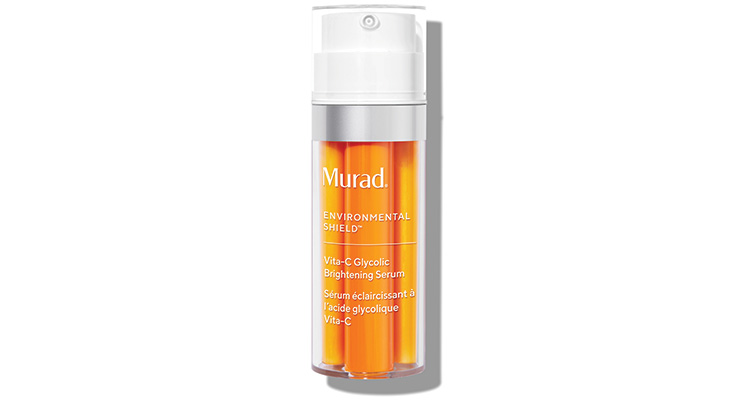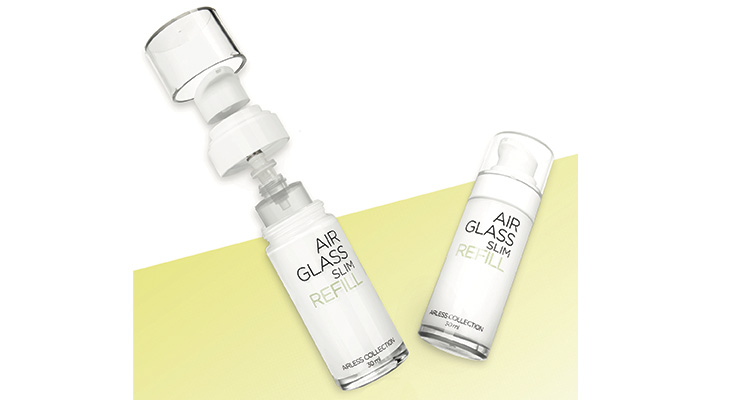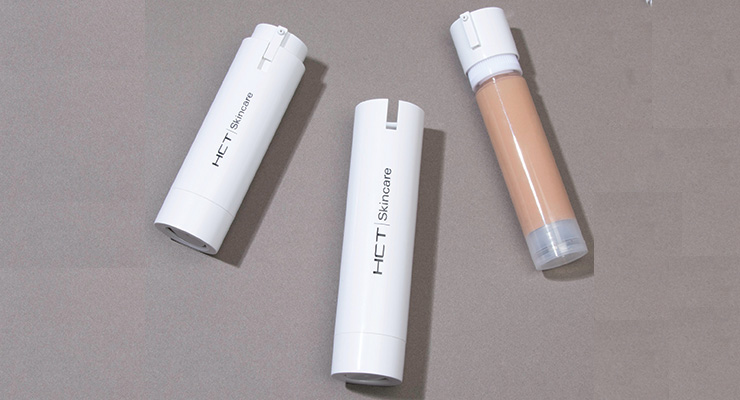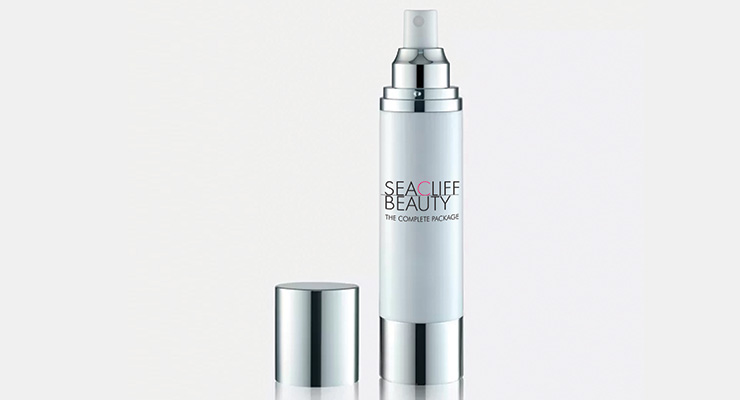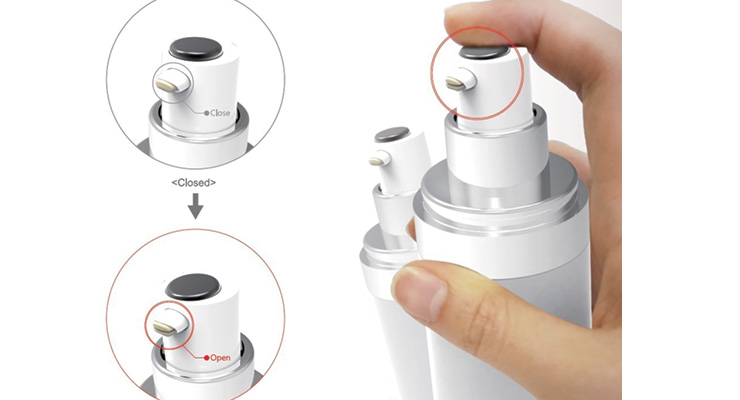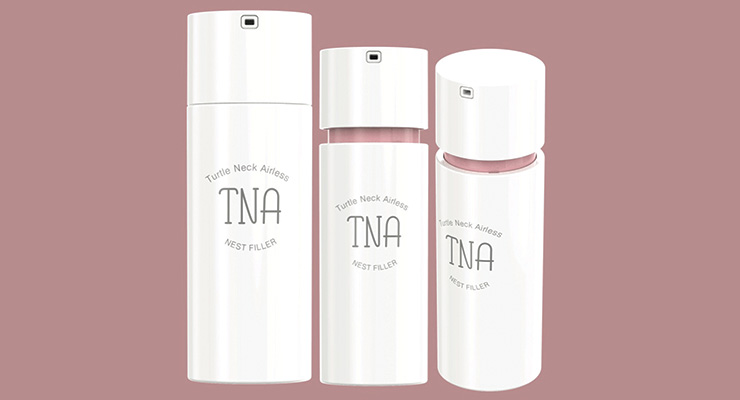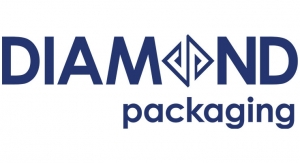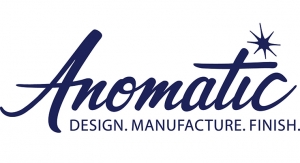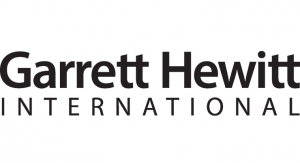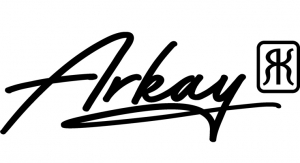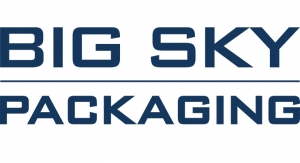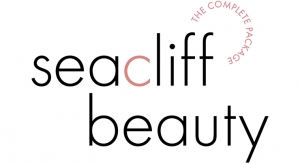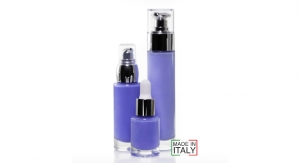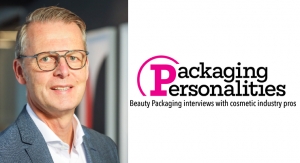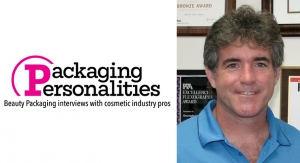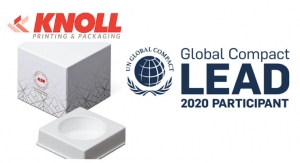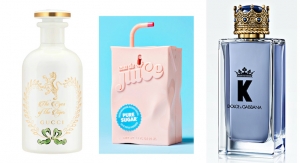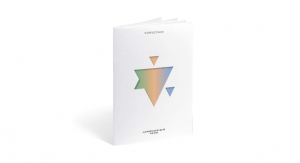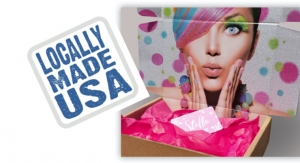Marie Redding, Senior Editor06.01.20
Airless packaging combines an airless pump with a bottle, jar or tube. Its use is on the rise, experts say. Analysts at Grand View Research report an “expedited demand.” The latest report by Research and Markets says the Global Airless Packaging market accounted for $4.3 billion in 2017—and is expected to reach $7.7 billion, growing at a CAGR of 6.7% by 2026.
Skincare brands are fueling the demand for airless packaging, according to reports. “A rising number of organic skincare brands over the coming years is expected to contribute to market growth, as well as a growing preference for convenient packaging,” one forecast states.
Airless packaging often looks high-tech and stylish, with sleek ergonomically designed pumps, which are convenient for dispensing skincare and cosmetics. Airless dispensing systems are also often essential to protect a formula. They’re engineered to keep active ingredients potent and natural formulations safe.
For this reason, the rise in “clean beauty” is likely to fuel demand. Daniela Ciocan, founder, Unfiltered Experience, says, “Clean beauty is moving from a trend to a widely adopted standard—and simpler formulas with fewer ingredients often require airless packaging.”
Indie brands were once the main drivers of the ‘natural’ product trend, notes Renaud Baker, general manager, Hana Innovation America. “Now, global brands are launching more natural product formulations that require airless packaging, due to its ability to maintain a product’s integrity throughout its shelf life. We see an increasing number of natural product launches that require the level of protection that airless packaging provides,” he says.
Flavio Unikowsky, business manager, Wista, says he often tells brand marketers that not all airless systems are created equal. “Many brands and consumers now realize the benefits of airless packaging—but although there are many options, very few suppliers can provide quality components,” Unikowsky says. “And different types of airless systems work best for different types of products,” he adds.
Wista’s Sage Airless System, for example, is ideal for oils such as CBD skincare. It features an internal one-way valve system with “flow control,” which blocks air from returning into the tube. “This prevents oxidation—and allows a brand to reduce the level of preservatives in a formula,” says Unikowsky. “By blocking air from returning into the package, the product’s shelf-life will remain the same as the first time it was used,” he explains.
Paula’s Choice Skincare often conveys to consumers the importance of its “smart” airless skincare packaging. “Our packaging ensures that our complex formulas stay as potent and effective as possible,” the brand states. Paula’s Choice Clinical 1% Retinol Treatment is in a double-walled opaque bottle with an airless pump dispenser. It is filled using a unique stabilizing process, which allows for next-to-zero exposure to oxygen.
In addition to offering protection, an airless package allows the user to fully dispense a product, down to the last drop. This functional feature is appealing to many brands, and is a recurring reason for choosing an airless package even when a formula doesn’t require it. “Brands tell us they need airless packages due to either the functionality they provide, or product protection, and sometimes it is for both reasons,” says Federico Prestini, managing director, Premi Beauty Industries. “We are receiving requests for airless packaging frequently,” he adds.
The team at SamHwa says that finding airless packaging that also addresses sustainability concerns is a top priority for beauty brands. “There is a huge drive to be more eco-conscious, and this still applies to airless packaging. We see a growing interest from brands to increase their sustainability efforts by using PCR and refillable airless packages,” says Vince McCarthy, sales director, SamHwa.
For this reason, SamHwa—and several other suppliers—have launched new sustainable airless packages, described in the section below. SamHwa’s new sustainable glass-hybrid package is shown above.
Airless Tubes, Jars, Dual-Chamber Bottles & More
The team at HCT Group says more requests are coming in from beauty brands for airless packaging, for a variety of products, but, mainly for skincare. “There is an increase in the use of airless pump dispensing systems versus typical dip tubes,” says Yeawon Kim, senior manager, global skincare, HCT Group. “Our customers are using airless packaging mainly for facial serums and lotions, and sometimes for cosmetics, such as foundations,” Kim says. HCT Group’s new airless Pictura Kit 2-in-1 features an innovative design for 2-in-1 products. It’s a bottle with a pump and jar, and it’s perfect for a lotion or serum plus a cream,” explains Kim.
Although bottles are most often chosen for skincare products that require airless packaging, some suppliers say they hear more requests for airless jars and tubes. “Airless tubes are a great alternative. They allow a brand to save on costs while the product still benefits from having full airless functionality in the package,” says Kim.
Airless jars typically dispense the product onto its top surface when the user pushes down on the lid. “Airless jars are not as popular as bottles and tubes, but they are an excellent option for a skincare product that needs a palette to mix on. Airless jars are also more hygienic than standard jars, and easy to clean after use,” explains Kim.
Kate Somerville Skincare is one beauty brand that uses airless packaging with pumps for many of its moisturizers. Its Retinol Vitamin C Moisturizer is in an airless jar to protect the stability of the formula. The user pushes down on the top to dispense the product.
Dual-chamber airless bottles are another option for skincare, and are especially useful for products that contain vitamin C. Murad recently launched Vita-C Glycolic Brightening Serum in a dual-chamber airless package. “It was chosen to preserve the formula,” the brand states.
The product features a unique “Vita-C Complex,” which is kept separated in one chamber until the product is used. The bottle’s second chamber contains glycolic acid, which accelerates cell renewal by exfoliating the skin’s surface cells to enhance vitamin C delivery. “The dual-chamber package delivers a concentrated, fresh dose of vitamin C and glycolic acid with every use,” according to the brand.
Beauty brands that are looking for an airless dual-dispensing package often find innovative solutions at SeaCliff Beauty. “Several brands often request our Yin/Yang Airless Dispenser. It has two chambers to keep two products separated until use, and the package can be dispensed at different angles,” says Vonda Simon, founder/president, SeaCliff Beauty.
New Options in Sustainable Airless Packages
Sustainability is a focus for nearly every company these days, but it is traditionally more of a challenge for airless packaging, due to the fact that dispensing systems contain various components. Several suppliers, however, now offer innovative solutions.
“We see significant interest from brands for airless packaging that is eco-friendly and sustainable,” says Baker. Hana Innovation’s new Eco Airless, available as a stock package, is the first 100% polypropylene (PP) airless package design on the market, according to the supplier. “As an all-PP design, the package is completely recyclable,” he says. “PCR content can also be incorporated into the resin for additional sustainability,” he adds.
Several other suppliers are offering brands new sustainable airless packages to meet the growing number of requests. They are either refillable, or made using sustainable materials—or both.
SamHwa just announced its first glass-airless hybrid package (shown on page 32). “It is an elegant design combined with sustainable innovation,” McCarthy says. The dual-layer package features a reusable glass outer bottle, which has a substantial weight to feel luxurious. This is combined with an inner plastic refill bottle, which is disposable and made from recyclable PCR.
Featuring clean lines and a modern look, the package has an ergonomically designed actuator to ensure smooth handling for an effortless user experience. “It provides all the benefits of our airless technology—preservation of ingredients, a near-perfect evacuation rate for highly-viscous formulations, and our proprietary airless engine to guarantee no metal contact with the formula,” McCarthy explains. “The POM (polyacetal)-free, EU-compliant pump upholds our commitment to consumer health and responsible material sourcing,” he adds.
Wista’s new Mono-Material Piston Airless System is launching this month. It can be made from one material, including a bio-based resin. “It is designed to be easily recyclable without having to disassemble it,” says Unikowsky. “The trend toward mono-materials and recyclable packaging is irreversible,” he says. The Emerald Mono-Material Airless System is shown. “It is ideal to preserve formulas with significant reduction of preservatives, microencapsulated formulas, high SPF formulas, lotions, gels, creams, formulas with Vitamin C, foundations, serums, among others,” says Unikowsky.
Premi Beauty Industries offers a new refillable glass airless package—the Airglass Slim Refill (see photo on page 30). The refill is designed for the supplier’s glass/plastic hybrid package, Airglass. The new glass refill easily separates from the package’s plastic components for easy recycling. “It is 100% recyclable glass, with a slim, ergonomic design. It protects the formula, and delivers a precise dosage. It is perfect for both prestige and masstige beauty packaging,” says Prestini.
Up next—the team at Premi Beauty says it is developing a refillable airless glass jar. “It is very innovative—and we will present it very soon,” says Prestini.
HCT Group offers a new sustainable airless package—the Refillable Bottle and Pump. It is available in 30- and 50ml sizes, and hasn’t yet been used by a brand in the U.S. “Various decorating options are available, such as using a spray on the outside while keeping the inner bottle clear to help keep it recyclable,” says Kim.
SeaCliff Beauty recently launched new airless sprayers, which are available in PCR. “They spray at all angles, and are great for sunscreens and body mists. These are stock packages that are customizable with decoration and color,” says Simon. The supplier also offers a Jumbo Airless Pump that can be bi-injected during the molding and manufacturing process. “The bottle’s outer layer can be PCR. The inner layer, which is in contact with the product, can be virgin material,” Simon says.
A Focus on Functionality
Focusing on functionality, several suppliers are offering airless packaging that provides additional benefits, to accommodate a variety of products. “Airless dispensing mechanisms have been our specialty for over 40 years, and we are always striving to innovate from an engineering and design standpoint,” says SamHwa’s McCarthy. “We receive numerous inquiries for our airless offerings, to accommodate a range of products, from makeup to sunscreen. We offer tubes, sticks, mist sprays, jars, compacts and more,” he says.
The team at Hana Innovation recently launched a new stock airless package, which provides added protection for sensitive products and active ingredients. It features an airtight actuator, which reduces weight loss and prevents the product from drying up in the actuator area.
“This is not on the market yet, but several large and small companies are performing evaluations and testing,” says Baker. The supplier’s stock airless packages can be customized with a decoration, and molding the actuator, cap, and base in a specific color.
Nest Filler recently launched the Turtle Neck Airless Pump. It features a modern design with an innovative collar with a safety lock, which twists to reveal a hidden neck and nozzle. “Twist it back, and the locking collar and nozzle retracts—eliminating the need for an over cap,” the supplier says.
What’s Next?
As the demand for airless packaging continues, we can expect to see more new developments from suppliers soon that fulfill the needs of “clean” beauty brands, while also meeting the beauty industry’s sustainability goals. “We’re working on offering more refillable airless pumps, in new styles,” says SeaCliff’s Simon. “This trend is still slow-moving, but we expect more interest in the near future. It becomes an inventory issue when you are dealing with refills,” she explains.
Premi Beauty Industries is developing a new airless packaging collection called “tech.” Prestini says, “It has an elegant and ergonomic design that coordinates well with our glass and bottle collection.”
The team at HCT Group says it will continue to focus on sustainability—looking ahead to developing the next generation of sustainable airless designs. Kim says, “We are testing PCR, and other materials. “Refillable designs are one of the best ways to keep airless packages ‘green’.”

